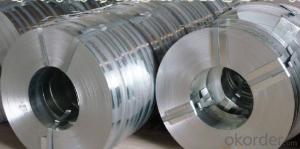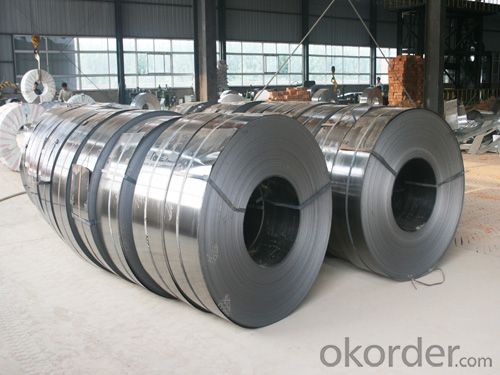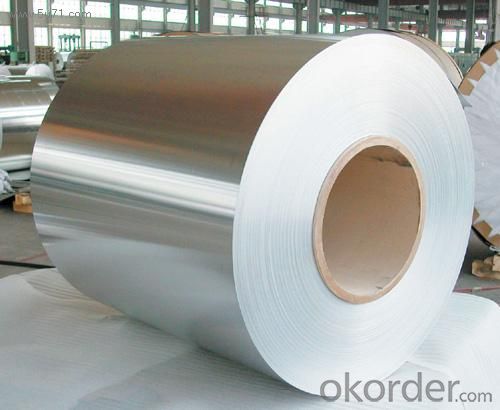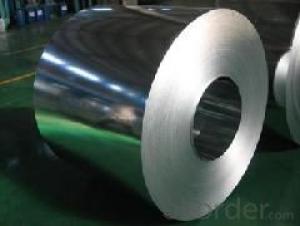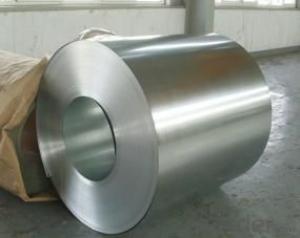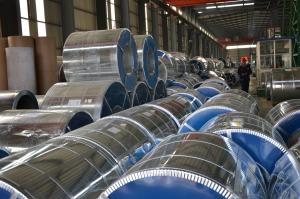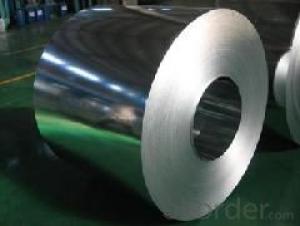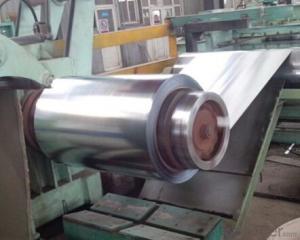Hot-dip Zinc Coating Steel Coil -On sale China
- Loading Port:
- China main port
- Payment Terms:
- TT OR LC
- Min Order Qty:
- 50 m.t.
- Supply Capability:
- 10000 m.t./month
OKorder Service Pledge
OKorder Financial Service
You Might Also Like
Specification
Hot-dip Zinc Coating Steel Coil -On sale China
1.Structure of Hot-Dip Galvanized Steel Description:
Hot-dip galvanized steel coils are available with a pure zinc coating through the hot-dip galvanizing process. It offers the economy, strength and formability of steel combined with the corrosion resistance of zinc. The hot-dip process is the process by which steel gets coated in layers of zinc to protect against rust. It is especially useful for countless outdoor and industrial applications.
2.Main Features of the Hot-Dip Galvanized :
• Excellent process capability
• Smooth and flat surface
• Good formability
• Good visual effect
3.Hot-Dip Galvanized Steel Sheet Images
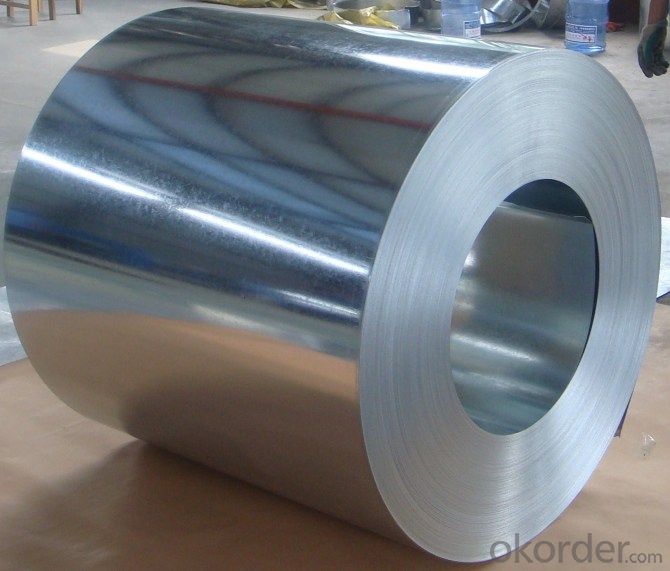
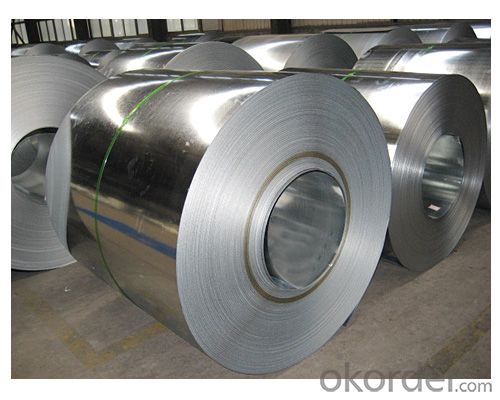
4.Hot-Dip Galvanized Steel Specification
Standard: ASTM, JIS,EN
Grade: CS, DX51D+Z,SGCC, SS 230~550,S220GD+Z~S550GD+Z, SGC340~SGC570
Thickness: 0.18mm~5mm
Width: max 2000mm
Coil weight:3-12 MT
Coil ID:508/610mm
Surface structure: zero spangle, regular spangle or minimum spangle
Surface treatment: Chromate treatment, Oiled/dry, skinpassed/non-skinpassed
Packing: Standard seaworthy export package
Technology test results:
Processability | Yield strength | Tensile strength | Elongation % | 180°cold-bending |
Common PV | - | 270-500 | - | d=0,intact,no zinc removal |
Mechanical interlocking JY | - | 270-500 | - | d=0,intact,no zinc removal |
Structure JG | >=240 | >=370 | >=18 | d=0,intact,no zinc removal |
Deep drawn SC | - | 270-380 | >=30 | d=0,intact,no zinc removal |
EDDQ SC | - | 270-380 | >=30 | d=0,intact,no zinc removal |
5.FAQ :
We have organized several common questions for our clients,may help you sincerely:
1.How to guarantee the quality of the products?
We have established the international advanced quality management system,every link from raw material to final product we have strict quality test;We resolutely put an end to unqualified products flowing into the market. At the same time, we will provide necessary follow-up service assurance.
2. How long can we receive the product after purchase?
Usually within thirty working days after receiving buyer’s advance payment or LC. We will arrange the factory manufacturing as soon as possible. The cargo readiness usually takes 15-30 days, but the shipment will depend on the vessel situation.
- Q: What is a steel coil?
- A steel coil is a long, continuous strip of flat-rolled steel that is wound into a coil shape. It is typically used in various industries, such as automotive, construction, and manufacturing, for making a wide range of products, including pipes, tubing, roofing, appliances, and automotive parts.
- Q: Could someone please explain what happens when steel is heat treated and why these happenings cause the steel to become harder? Please dig down into the micro details of the crystallites but in somewhat laymen's terms. Also describe the processes which achieve these results; if you have the time. Thanks for your time and effort.
- Alright, usually whu heat you heat treat mild steel, this is because you would like it stronger than you got it. To do this you must alter the grain structure of the part or in other words, the CRYSTALLITES. Ultimately you'll end up altering the nature of the grains structure changing the tensile strength it can handle, yield strength, and even change the elongation percentage that it can tolerate under load. Heat treatment controls the rate of diffusion, and the rate of cooling within the microstructure to create these elements. Usually what they use to do this is add an element to it to make it stronger such as carbon to increase its rockwell hardness, which by the way the lower you go the harder the part can become. Heat treatment can be used in more ways than this. It can also be used to weaken the parts grain structure. This will lower the parts mechanical properties making it softer and more ductile or easier to manipulate if you have to bend it into a particular shape. Typically if you allow the part to cool after heat treatment it does go through annealing. The part will be heat treated into different stages. The first being the austenitic crystal phase which depending on how hard and strong you want it, will be at its peak. When it is cooled, it will go through a will transform to martensite which is a hard yet brittle crystalline structure. Martenised part will usually be tempered to a certain degree to improve the mechanical properties to what is needed. There is more to this and you can use the link below to read more about it.
- Q: Are steel coils used in electrical equipment manufacturing?
- Yes, steel coils are commonly used in electrical equipment manufacturing. They are often used in the construction of transformers, motors, generators, and other electrical devices. The steel coils provide structural support, magnetic properties, and efficient conduction of electricity, making them an essential component in electrical equipment manufacturing.
- Q: What are the different grades of steel coils?
- There are several different grades of steel coils, including low carbon steel, medium carbon steel, high carbon steel, stainless steel, and galvanized steel. Each grade has its own unique properties and is used for specific applications based on factors such as strength, corrosion resistance, and formability.
- Q: What are the different methods of storing steel coils?
- There are several methods of storing steel coils, depending on the specific requirements and constraints of the storage facility. Some of the commonly used methods include: 1. Stack storage: This method involves stacking the steel coils on top of each other in a stable manner. It is a cost-effective method, as it maximizes the use of vertical space. However, it requires careful stacking to ensure stability and prevent damage to the coils. 2. Block stacking: In this method, steel coils are arranged in blocks, with each coil placed directly on top of another. The blocks are then stacked to maximize the use of space. This method provides stability and allows for easy access to individual coils. However, it may require the use of additional equipment such as coil cradles or coil saddles to prevent damage. 3. Coil cradles: Coil cradles are specialized racks or frames that are designed to hold steel coils horizontally. They provide support and prevent the coils from rolling or shifting. This method is particularly suitable for smaller coils or when quick access to individual coils is required. 4. Coil saddles: Coil saddles are U-shaped frames that are specifically designed to hold and support steel coils vertically. They are often used in conjunction with block stacking or stack storage methods. Coil saddles provide stability and prevent the coils from rolling or collapsing. 5. Coil racks: Coil racks are steel structures that are designed to hold multiple coils in an organized manner. They may have several levels or tiers, allowing for efficient use of space. Coil racks are typically used for larger coils and can be customized to accommodate specific coil dimensions. 6. Automated storage systems: In large-scale storage facilities, automated systems such as coil cranes or coil carousels may be employed. These systems use mechanical devices to transport and store steel coils, allowing for efficient and fast retrieval when needed. They are particularly useful in high-volume operations where frequent coil handling is required. It is essential to consider factors such as coil size, weight, accessibility, and environmental conditions when determining the most suitable method of storing steel coils. Additionally, proper handling, labeling, and regular inspections are crucial to ensure the integrity and longevity of the stored coils.
- Q: every time i look for steel over the internet like to build cars motorcycles ect i only get steel pipes where can i get steel sheets
- This okorder /... Most towns have a steel supply house/ business, check your yellow pages. Also check with local welding and machine shops. They can give you ideas and or their suppliers. They often have bits and pieces that you might buy, instead of ordering a full sheet of material. Wingman
- Q: What are the main factors that affect the strength of steel coils?
- The main factors that affect the strength of steel coils include the quality and composition of the steel used, the manufacturing process, the thickness and width of the coils, and any heat treatment or tempering applied to the steel. Additionally, factors such as storage conditions, handling, and transportation can also impact the strength of steel coils.
- Q: The Iron and Steel Corporation of Great Britain (1949) or Iron and Steel Bill was introduced in 1949 during the Labour post-war Government.What was it introduced for?
- It was a holding company that originally had 107 companies who manufactured iron or steel products in Great Britain.
- Q: Why can't you use a lead shot only choke with steel shot or a steel shot only choke with lead shot? I have used a lead only choke with steel shot and my shotgun shot fine and there was no damage to the choke.
- You should not have done this. It not a matter of shooting fine - it's a question of getting the correct distance and shot pattern SAFELY. Lead only chokes squeeze the lead shot a considerable bit. Lead is compressive and soft - it takes more squeeze to get the correct patterns from a shotgun. Steel only chokes do not squeeze as much as the lead version because the steel is very had and does not compress well. When you accidentally shoot lead through a steel chock the pattern will be weird. But, it usually is not an unsafe condition. However, steel through a lead choke will cause unsafe pressure at the choke and can explode. You end up with a bugs bunny/road runner cartoon looking shotgun! Most gun shops all over the USA are decorated with these blown up shotguns from people doing exactly what you did. Unless you want to add yours to the other dead gun collection in some shop - I recommend you take your shotgun and all your chokes into a gun smith and have him look it all over. See if anything is out of tolerance. Guns are not fool proof. If you do not follow the instructions and operate them safely they will blow up and tear a piece of your body off. Just ask any ER doctor or long time shooter.
- Q: I am making a permanent magnet, just for fun. I am trying to find the best grade of steel to do so with.
- The type of steel you require is Steel ( Iron + Carbon, mainly.),{many different types of steel } with a high Cobalt and Nickel content. These alloyed together give the best Permanent Magnets, mainly due to their own individual magnetic properties / characteristics being retained in the Alloy. All 3 metals can be magnetised by there own, but Cobalt is known to cause cancer. Nickel, is poisonous and can also cause sever Dermatitis and the destruction of skin tissue.But when alloyed together with Iron they are pretty harmless. Interesting thing is, All of these metals (in this case Elements) can share the same Mass Number ( 60 ). And yet are totally different in their other properties beside Magnetism. Cobalt - Samarium - alloys, create some of the worlds most powerful permanent magnets. And were used in medicine, But are now superseded by Neodymium magnets which are employed instead. Edit; What you could try is, mild steel which is widely available and easily found. . The steels mentioned above are pretty exclusive materials and I personally would not know how to test for their contents, of which they are made from. Soft Iron is good for making electro-magnets if you fancy a go at making one. .
Send your message to us
Hot-dip Zinc Coating Steel Coil -On sale China
- Loading Port:
- China main port
- Payment Terms:
- TT OR LC
- Min Order Qty:
- 50 m.t.
- Supply Capability:
- 10000 m.t./month
OKorder Service Pledge
OKorder Financial Service
Similar products
Hot products
Hot Searches
Related keywords
